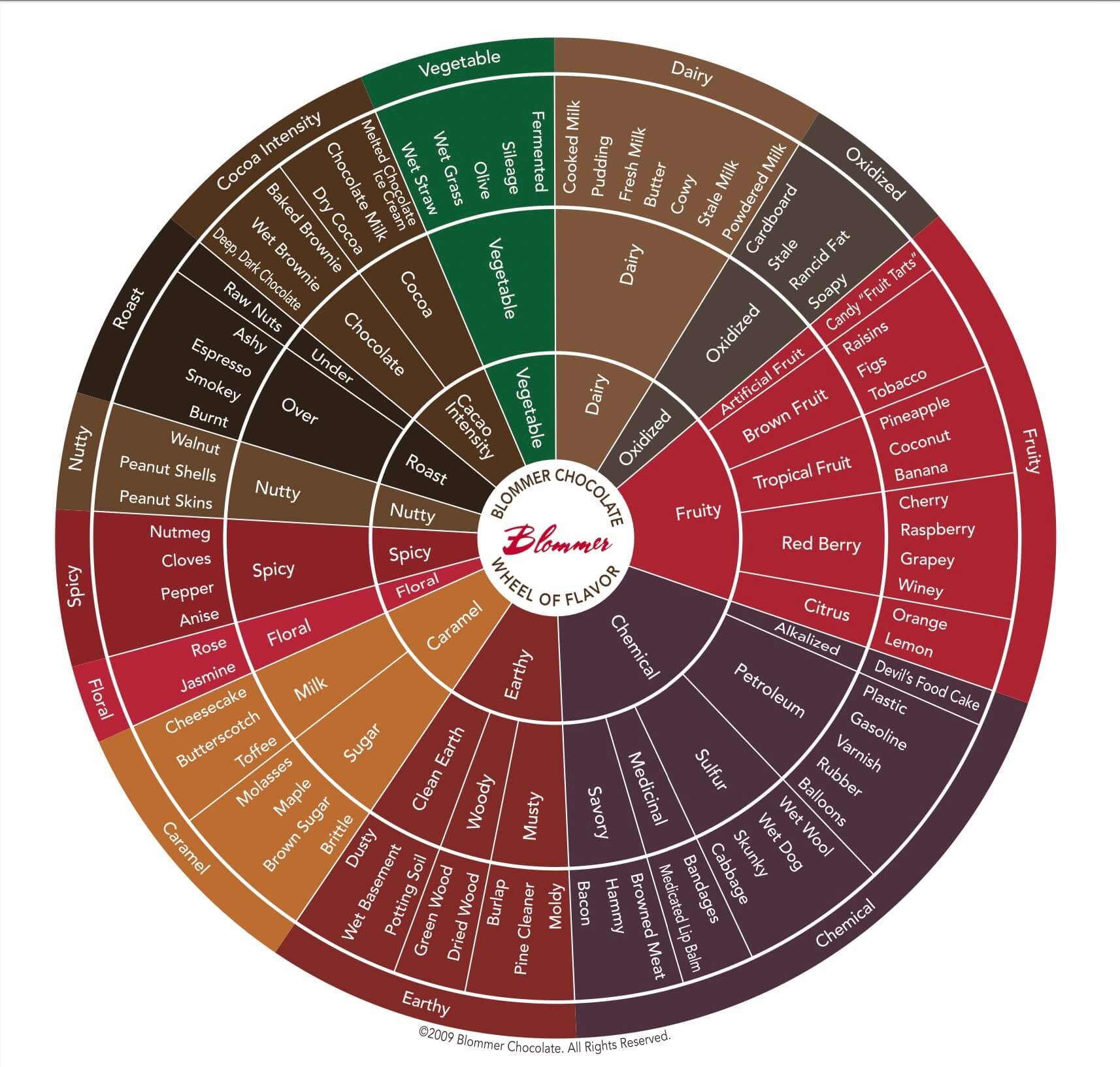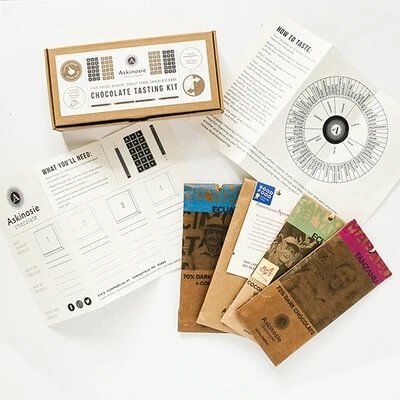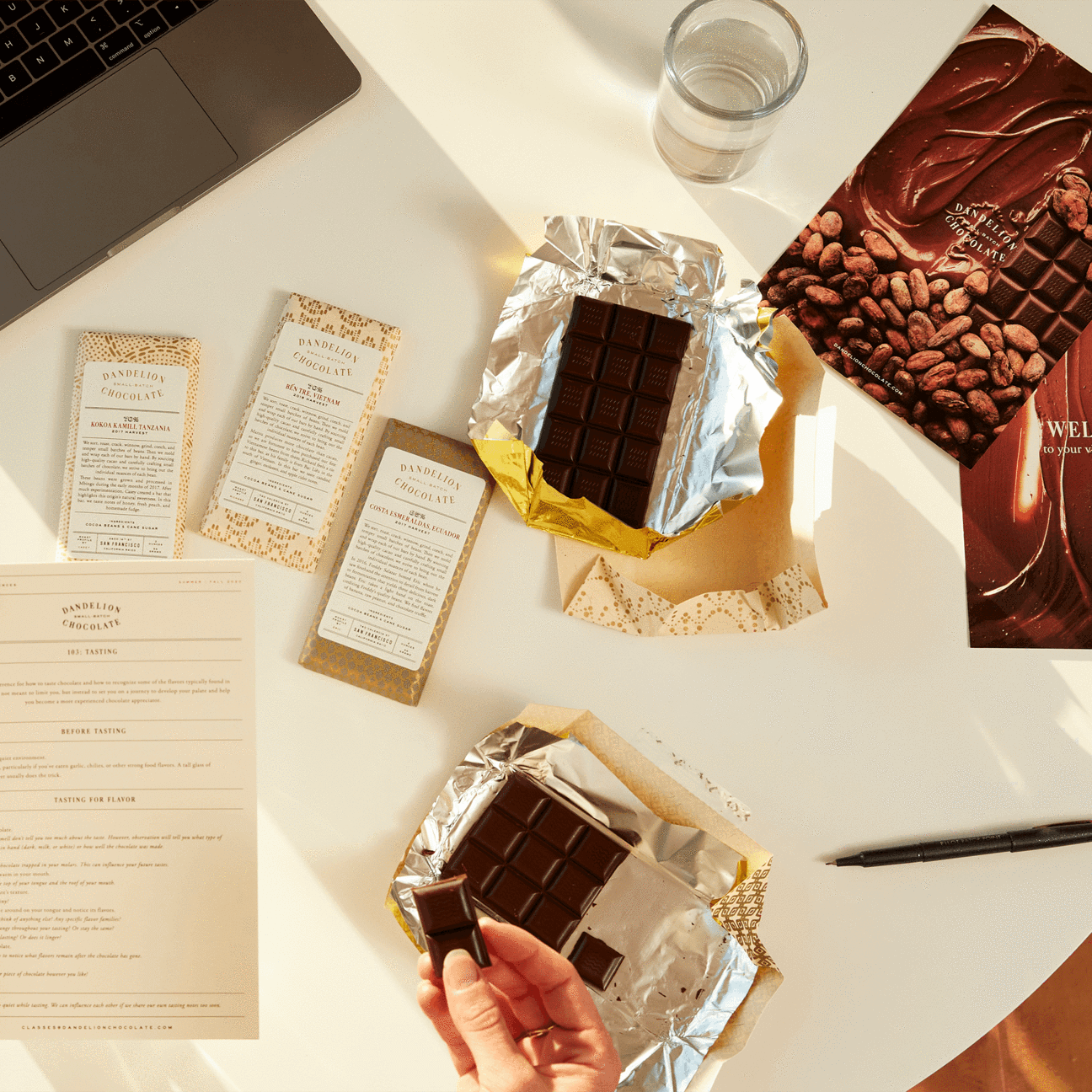How Flavor Wheels, Tasting Tutorials & Tasting Kits Can Help You Taste Chocolate
One way to learn more about chocolate and enjoy it more, is to taste it. Not just to eat it, but to taste it. Tasting is to “perceive or experience the flavor of something” versus eating, which is quite literally, “to put (food) into the mouth and chew and swallow it.”
Tasting might seem intuitive, but many chocolate companies, retailers, and educators have created tutorials to teach people how to taste chocolate. If you want to do a little tasting on your own, check out the Chocolate Tasting from Guittard, The Art of Tasting from Valrhona, follow Ghirardelli’s instructions for Tasting Chocolate, discover How to Taste Chocolate according to Eataly or “Take a Spin on the Flavor Wheel” with Blommer.
How to Taste Chocolate
The steps for tasting chocolate are basically the same no matter what source you consult and it involves all the senses in some form or another. Tasting chocolate starts with seeing the chocolate and observing what it looks like, then smelling it, breaking it to hear if it snaps, placing it on your tongue to evaluate the texture and flavors. Of course, there’s also preparing for your tasting by cleansing your palate, avoiding strong-flavored food and drink like coffee, onions, and garlic, as well as perfumes.
Flavor Wheels
When it comes to the texture of chocolate, it’s pretty easy to determine if it’s gritty, creamy, soft, or brittle. But the flavors of chocolate can be a bit more elusive. What flavors you taste in chocolate may vary. All sensory tasting is somewhat subjective. Just having the right vocabulary can help with the tasting. This is where flavor wheels come in. Flavor wheels attempt to categorize flavors and group them which makes it easier to assess and identify flavors when tasting.
Multiple flavors and aroma wheels exist for many kinds of food and drink including coffee, wine, honey, and chocolate. Since there is no one flavor wheel for chocolate, we looked to find a variety of them. Some chocolate companies pair their flavor wheels with tasting instructions. Some good options include the Aroma and Flavor Wheel from Felchlin, the Chocolate Tasting Ritual and Consumer Chocolate Sensory Wheel from Barry Callebaut,
There’s also a Chocolate Tasting Wheel and a simple guide to tasting from Zingerman’s Deli, a Chocolate Tasting Wheel from True Chox, or download the Dark Chocolate Flavor Wheel from Bean to Bar World.
For a different take, check out a Chocolate Sensory Wheel created by food scientists at Ghent University and the Cacao Sensory Analysis Tasting Form created by USAID-Equal Exchange and the TCHO Cooperative Development Project.
Tasting Kits
While you could certainly put together a variety of different chocolate to taste, you can also purchase a kit. Some kits from top brands include the Askinosie Chocolate Tasting Kit, which is $38 and includes four best-selling chocolate bars made with cocoa beans from around the world. Inside you'll find an informational placemat with tasting steps,
Tasting Kits with Virtual Tastings
If you want to taste and learn from experts all from the convenience of your own home, that’s an option too. Taza hosts a virtual tasting to go with their Virtual Tasting Kit for $42.99. The Theo Virtual Tasting Kit & Class is $39.99 and the Online 103 Chocolate Tasting which includes a class and 5 single origin chocolate bars from Dandelion Chocolate is $70.




